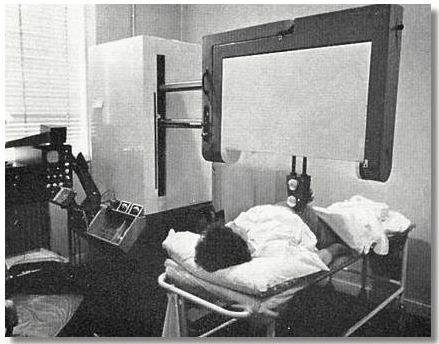Evolution of the Ultrasound Machine
This ancestor of the modern day ultrasound machine was 8 ft tall and occupied approximately a third of the space available in an average scanning room. The ultrasound images were static, and were created by rocking the transducer slowly over the body part being examined. This was no small feat as the gantry that housed the probe was very large as well, and much physical effort had to be exerted to alter the scanning plane. The image completely lacked any grey scale, but it would still appear eventually on a cathode ray tube. The Diasonograph’s primary contribution to medicine and ultrasound technology is that it sparked the ultrasound race.

Ian Donald operating the Mark 3 Diasonograph in 1960

Companies such as GE, Philips, and Abbot are all vying to be the manufacturers of the smallest machines with the best resolution. The benefits of portable ultrasound machines are many and varied, and engineers at such companies are hard at work to make them ever more portable. The quality of images even on portable machines is phenomenal, and they have many of the features that full ultrasound consoles do, yet engineers are working to bridge the small gap between consoles and portable machines as well.
Ultrasound machines have evolved into sleek tools that are used to provide detailed images of what lies underneath the skin. It now seems impossible to imagine obstetrics without ultrasound technology. Life-threatening heart conditions are diagnosed through ultrasound machines in echocardiography every hour. Even potential future dangers are being predicted by using ultrasound to screen for blood vessel disease.Ultrasound probes have gone from a gargantuan rarity to a tiny necessity, and the future of ultrasound technology looks bright.
At A.M.E. Ultrasounds we pride ourselves on providing the highest quality customer service. If there is a particular topic you would like to read about, learn more about, or would be interested in, please feel free to contact us!
If you’d like to learn about the author, click HERE
If you’d like to contact us, click HERE
Sincerely,
Your team at A.M.E. Ultrasounds
Ephraim@ameultrasounds.com
